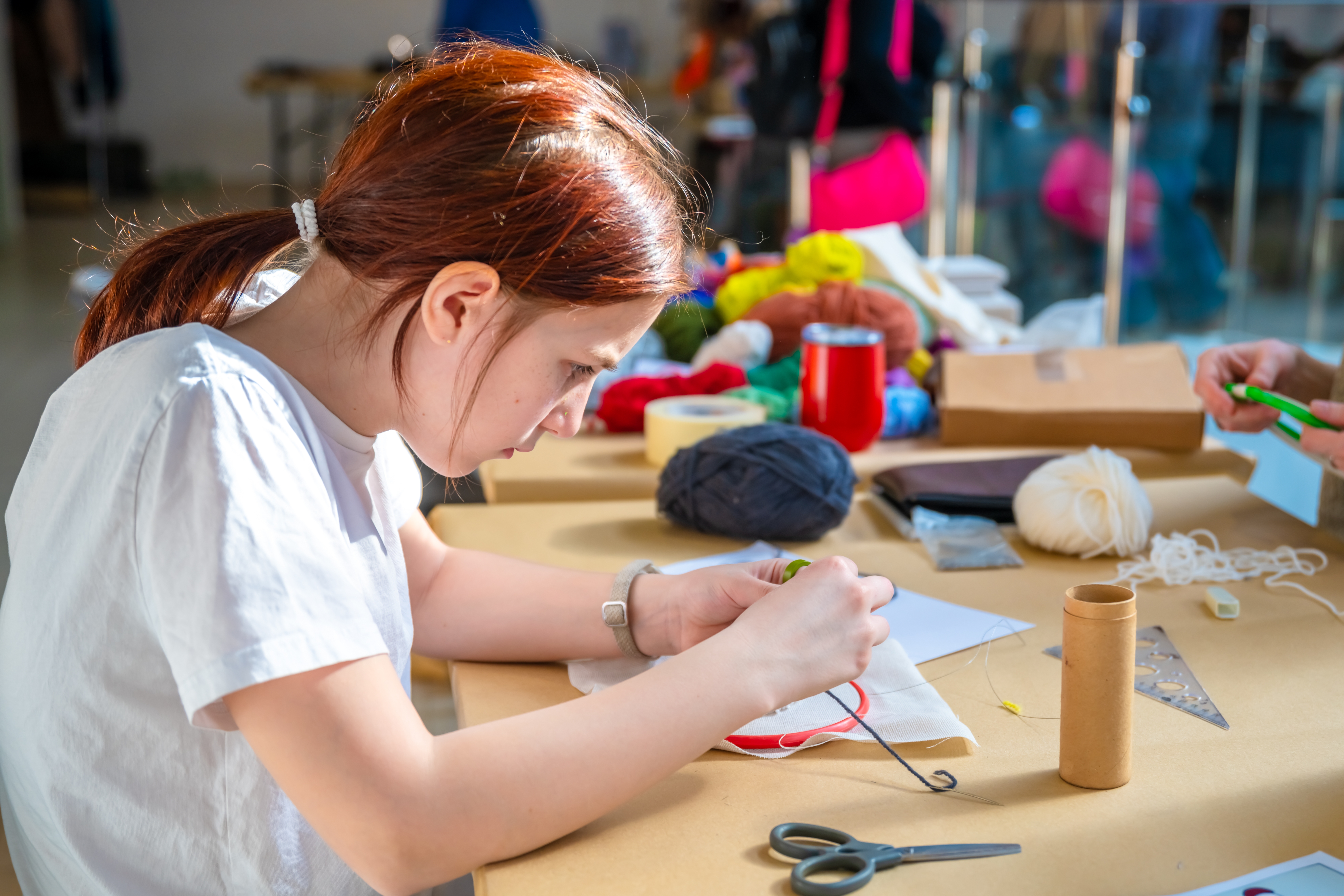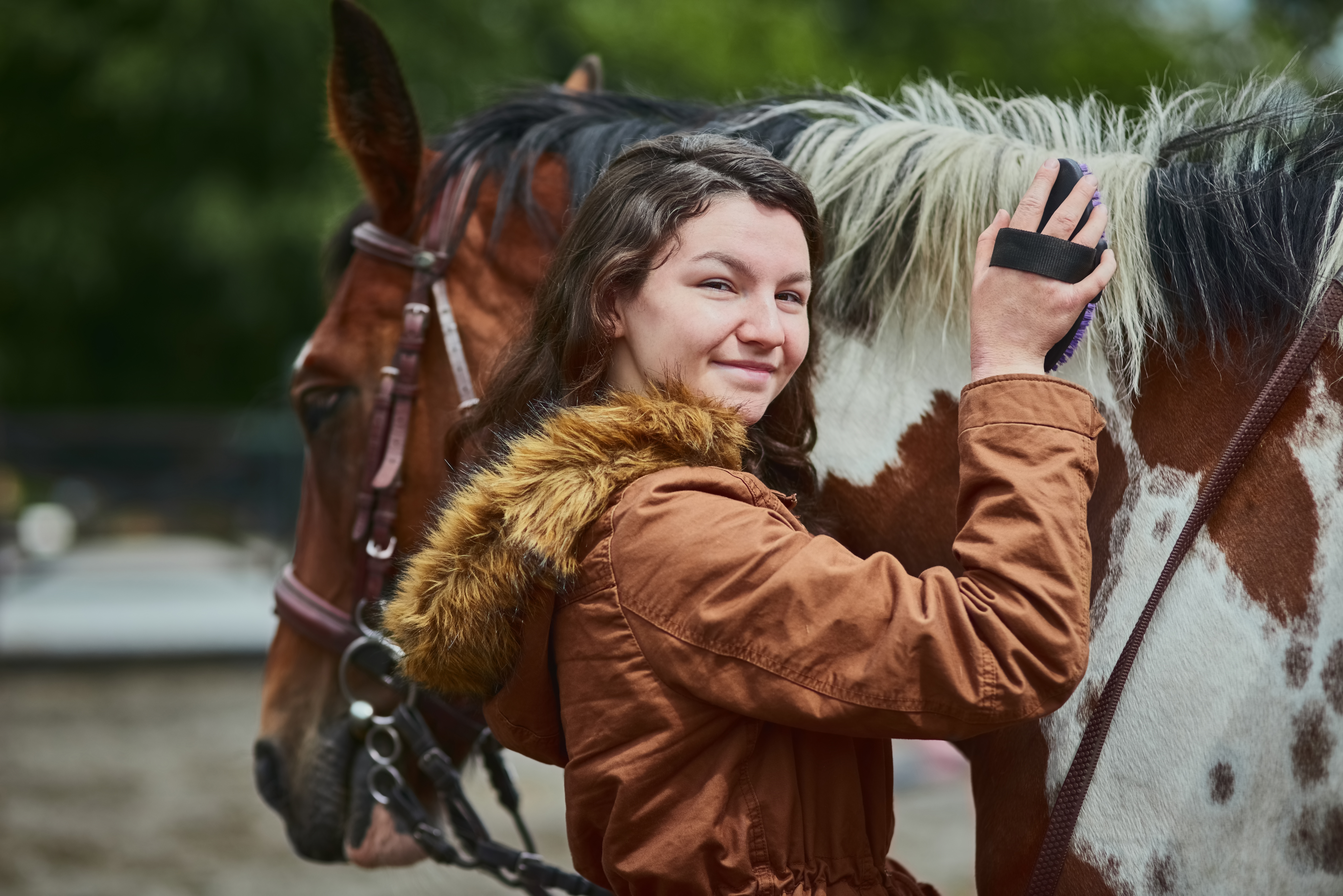What is wellbeing?
Wellbeing is a term used to describe a person's happiness and satisfaction with their life(1). It is a combination of feeling good and functioning effectively. Wellbeing encompasses physical, psychological, emotional and social aspects. Individual characteristics can lead to wellbeing, such as having good social skills and empathy, optimistic thinking, being able to regulate and rationalise emotions, having a sense of purpose, and a sense of humour. The relationship between these characteristics and wellbeing can go both ways. Wellbeing is affected by the economic, social and environmental conditions that someone lives within(2). This includes factors such as income, housing and employment.
Individual well-being is influenced by family, community and societal wellbeing(2). For family wellbeing, family members must be healthy and safe, have educational and work opportunities, as well as have quality relationships with other family members. Community wellbeing requires that the social, cultural and psychological needs of community members are met, which can be through community participation. Societal wellbeing is about ensuring that the basic needs of all members of society are met and that individuals feel they can participate in society to achieve collective goals.

Wellbeing and health – why it is important?
Positive wellbeing is important for all of us to make life worth living. Wellbeing also has many wider benefits such as improvements in health, productivity, education and community engagement which then further reinforce wellbeing(2). Wellbeing and health are closely intertwined, with wellbeing essential to good health and health contributing towards positive wellbeing. The World Health Organisation (WHO) includes physical, mental and social wellbeing as part of its definition of health(3).
“Health is a state of complete physical, mental and social well-being and not merely the absence of disease or infirmity.” WHO 1946

Wellbeing in young adults
This report examines the wellbeing of young adults aged 18 to 25 years in Sefton. This is a key time in life when there is ongoing physical, cognitive, social, emotional and sexual development(4). It is a time of major transitions in life, such as leaving education and moving into employment, leaving the family home, and gaining independence(5). Many healthy habits formed in young adulthood can endure throughout adulthood, thus impacting long-term health outcomes. There is often a lack of focus on health and wellbeing in young adults as they are viewed as having fewer health problems than children and older adults. However, young adults have higher rates of health problems and worse health outcomes than adolescents(6). Promoting the health and wellbeing of young adults can achieve benefits for health and wellbeing just now, as well as help bring benefits for the rest of their lives and the next generation(4).

Strengths-based approach to wellbeing
When talking about health and wellbeing, there is often a focus on what makes people unwell. Instead, this report will focus on the things which provide people with positive health and wellbeing(7). This includes things which make people’s lives manageable, enjoyable and meaningful(8). These things can give people the resources to be able to cope with life stresses and manage tensions. As well as individual assets, physical and social environments can also contribute towards positive health and wellbeing.
A strengths-based approach to wellbeing focuses on an individual or community’s strengths rather than their weaknesses(9). It looks to empower people and communities so that they have the confidence and sense of self-control to make positive changes using their existing capabilities. This approach helps people realise their potential, overcome challenges and become more resilient. Strengths-based approaches are about working together with people to help them achieve their goals rather than doing things for and to people. These approaches consider the whole person or community and not just a specific objective or goal.
This report aims to investigate the strengths and assets which young adults in Sefton are using to help achieve their wellbeing goals. Through this investigation, we can learn lessons on how to empower young adults to improve their wellbeing.

What influences wellbeing in young people?
Factors which influence wellbeing can be either internal or external. Internal resilience can be a strong predictor of positive wellbeing(1). Resilience allows individuals to cope with stressors in life to maintain wellbeing. Factors which contribute to internal resilience include good social skills, behaviours such as empathy, emotional regulation, optimism, the ability to rationalise emotions, and feelings of self-control. External factors also influence resilience, including having positive relationships with parents, other caring adults, peers and teachers.
Interventions to help promote mental health and prevent mental health problems in young people can be targeted at those at the highest risk of mental health problems or provided universally; and can happen in a variety of settings, including educational settings and community locations. Research has shown that these can be effective in preventing mental health symptoms, promoting self-esteem, reducing aggression and violence, increasing mental health literacy, improving quality of life, increasing cognitive skills and improving educational performance(10,11).

Family and friends
Connections with family and friends is an important influence on young people's wellbeing(5). Positive family relationships can help young people develop more positive social behaviours and greater self-confidence, leading to higher educational achievement and better health outcomes. Family can also provide social support helping young people to overcome life stresses(12). Peers and social groups can have a positive influence on the health and wellbeing of young adults(5). Positive relationships with peers can create resilience, helping to protect against life stressors and health risk behaviours.

Education
Education is important for both short and long-term health and wellbeing in young people(5). It gives young people the knowledge and skills to control their lives and opportunities for good employment. Education also increases health literacy and improves health decision-making, as well as promoting self-esteem, social support and community participation. Positive student teacher relationships can increase social skills and educational performance(1). Schools and further education establishments can be good settings for interventions to improve and protect young people’s wellbeing.

Work
Employment is important for short and long-term physical and mental health and wellbeing(1). Secure, good-quality work in young people is associated with better mental and physical health outcomes. Being in work or education as a young adult is a strong predictor of future employment, which influences long-term health outcomes. Also, having access to an income can mean more freedom for someone to explore their interests and have less stress and worry about making ends meet to allow them to better enjoy their lives.

Community
Community wellbeing can contribute to an individual's wellbeing by helping meet their social and psychological needs(2). Young adults' engagement in communities can improve their health and wellbeing as well as providing benefits for the wider community(5). Community engagement is associated with higher educational achievements and future civic engagement by getting involved in decision making about what impacts the local community and being heard.

Volunteering
Volunteering can provide benefits for the wellbeing of young people(13). If this volunteering is within the local community, then it can also provide wider community benefits. This can also help young people to feel more engaged in their local community which can have additional benefits. Young people who volunteer are more likely to be from advantaged backgrounds so the benefits of this volunteering may increase inequalities. There is a need to ensure that access to voluntary opportunities is accessible to all young people to ensure they can all benefit.

Creative activities
Participation in creative activities for young people can increase their wellbeing(14). This includes involvement in music, arts, photography, drama and dance activities. These activities have been shown to have positive effects on health behaviours, self-esteem, levels of knowledge and physical activity, which could lead to greater wellbeing. However, opportunity can be a barrier to participating in creative activities making it more difficult for a young person who may be more disadvantaged to take part, again potentially widening increase inequalities in the wellbeing of young people(15). It is important to consider this when developing spaces for creative community activities to make them more open and accessible to all young people in the community so that everyone can benefit from them.

Physical activity and sports
Physical activity has been shown to have both short and long-term benefits for both physical and mental health in adults(16). Research on young adults has shown that physical activity reduces the risk of becoming depressed(16,17). This includes physical activities such as yoga, resistance training and aerobic exercise(17). Although short-term physical health benefits from exercise are small in this age group, over the longer term, people exercising regularly will experience large improvements in physical health(18). Participation in community sports may have additional benefits for social and psychological wellbeing through improved self-esteem and social interactions(19).

Green spaces
Research has consistently shown that access to green spaces, such as parks, is associated with improved physical and mental health and wellbeing(20). In young people, access to green spaces can reduce stress, improve mood, reduce depressive symptoms, increase emotional wellbeing, and lower psychological distress(21). In addition to the mental wellbeing benefits of access to green spaces, they can also provide places for physical activity, which can improve both physical and mental health. Access to blue spaces such as the sea, lakes, rivers and canals can also contribute towards mental health and wellbeing(22). Sefton is rich in green and blue spaces with over 30 parks and 22 miles of coastline, which can contribute to the wellbeing of young people in the borough.

Caring for animals
Caring for animals has been shown to have positive effects on physical, mental and social wellbeing (23). Research suggests that caring for dogs has particular advantages for health and wellbeing. There are several ways through which pet ownership increases wellbeing in young people. These include reducing social stress, helping people to stay well and giving people a positive outlook.

Social media
There has been much speculation on the effects of social media on young people. Young people use social media to a much greater extent than older generations, so this could potentially have a large impact on young people's wellbeing(25). Research has also shown that social media can provide social support for young people, which can facilitate mental wellbeing(26). However, other research has identified that greater social media use in young people may be associated with poorer mental health, with increased symptoms of anxiety and depression, and thoughts of self-harm and suicide(25,26). There is limited high-quality research on the effects of social media on young people's wellbeing, however, it likely has both positive and negative effects.
Key points
- Wellbeing is a term used to describe a person's happiness and satisfaction with their life, which encompasses physical, psychological, emotional and social aspects.
- Wellbeing is influenced by internal factors as well as wider social, economic and environmental factors.
- Health and wellbeing are closely intertwined, with wellbeing contributing to health and good health to positive wellbeing.
- Young adulthood is a time of key physical, cognitive, social and emotional changes which impact on wellbeing.
- Promoting health and wellbeing in young adults can have benefits for health and wellbeing now and in the future.
- A strengths-based approach to health and wellbeing focuses on strengths that provide people with positive health and wellbeing.
- Factors which influence health and wellbeing can be internal or external.
- Family wellbeing, education and work can contribute towards good health and wellbeing.
- Community engagement and volunteering can contribute towards both individual and community wellbeing.
- Creative activities and physical activity, including sports, can improve health and wellbeing.
- Access to green spaces, such as is abundant in Sefton, can contribute towards positive wellbeing.
- Caring for animals can contribute towards positive mental wellbeing.
- Social media can have both positive and negative effects on mental wellbeing.


